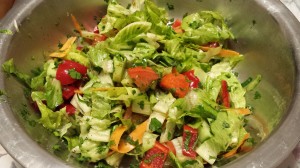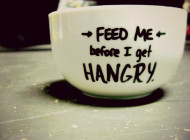Improve your healthy living with a diabetic diet plan
You’re diagnosed with diabetes. What next? Where do you start? Which foods do you eat? Which foods can’t you eat? Should you ditch the pasta and start eating salad? Avoid potatoes? Avoid bananas? Limit carbohydrates altogether?
There is a wealth of information on the internet.
But how do you separate fact from fiction?
That is where an Accredited Practising Dietitian comes in. Improve your healthy living with a diabetic diet plan.
 Lifestyle intervention is key! Along with physical activity, it’s time you started thinking differently about food. And remember, different people respond differently to different foods. It is important not to compare yourself to others and experiment which foods work best for you.
Lifestyle intervention is key! Along with physical activity, it’s time you started thinking differently about food. And remember, different people respond differently to different foods. It is important not to compare yourself to others and experiment which foods work best for you.
There is not one strict diabetic diet plan, but there are common approaches to improve overall diabetes management. Ensuring that you consume foods from the 5 food groups comes first, followed by a reduction in alcohol intake, and quitting smoking. Consuming 2 fruits and 5 vegetables per day is crucial, as is consumption of dairy, meat and meat alternatives, breads and cereals, and plenty of water. Just as important is an eye for portion sizes – be conscious of the amount of carbs you consume, and food in general, because eating too much food, even healthy food, will most likely lead to weight gain.
Breads and cereals are not the enemy
Breads and cereals are an essential part of any diet. They provide the body with a multitude of nutritional benefits, and are a great source of energy. It is best to select low GI carbohydrates. When you start using low-GI foods to improve blood glucose control, other lesser known bonuses include that it can also help with weight loss, prevention of heart disease, improve mental health and performance, and promote healthy skin.
A healthy balanced diabetic eating plan includes enjoying low GI carbs, moderate carbohydrates, low saturated fat, moderate sodium (salt), and high fibre. Add a low GI carb at every meal, and choose low GI carb foods as midmeals.
With low GI, you can eat more and weigh less!
After some tasty breakfast ideas?
- Poached eggs or baked beans served onto soy linseed bread and topped with tomato, avocado and spinach.
- Porridge made with rolled oats or bircher untoasted muesli, topped with berries and sprinkled with nuts and seeds.
Lunch ideas? 
- Garden Salad with beef strips or tuna or chickpeas mixed through it.
- Wholemeal bread served with some low-fat mayo and filled with tuna and colourful salad.
What’s for dinner?
- A lean meat fillet with barley, served with an avocado and tomato salad.
- Chicken drumsticks with couscous salad.
- High fibre pasta with seasonal vegies. Add some legumes or meat to the cooking pot for an extra boost of protein.
What about mid meals or healthy snacking?
- 200g tub of diet yoghurt (topped with bran, fruit or nuts for an extra delight)
- Piece of fruit
- Vegetable sticks with hommus, tomato salsa, avocado dip, pumpkin dip (get creative!)
- A small handful of unsalted nuts
- Wholemeal crackers with avocado, cheese and tomato.
A healthy diabetic eating plan will help you control your blood glucose levels, lose weight, and lower your cholesterol and triglyceride levels. A dietitian can help you make adjustments to suit your specific nutritional needs.
Find this article on WatchFit.
web sex livecam


